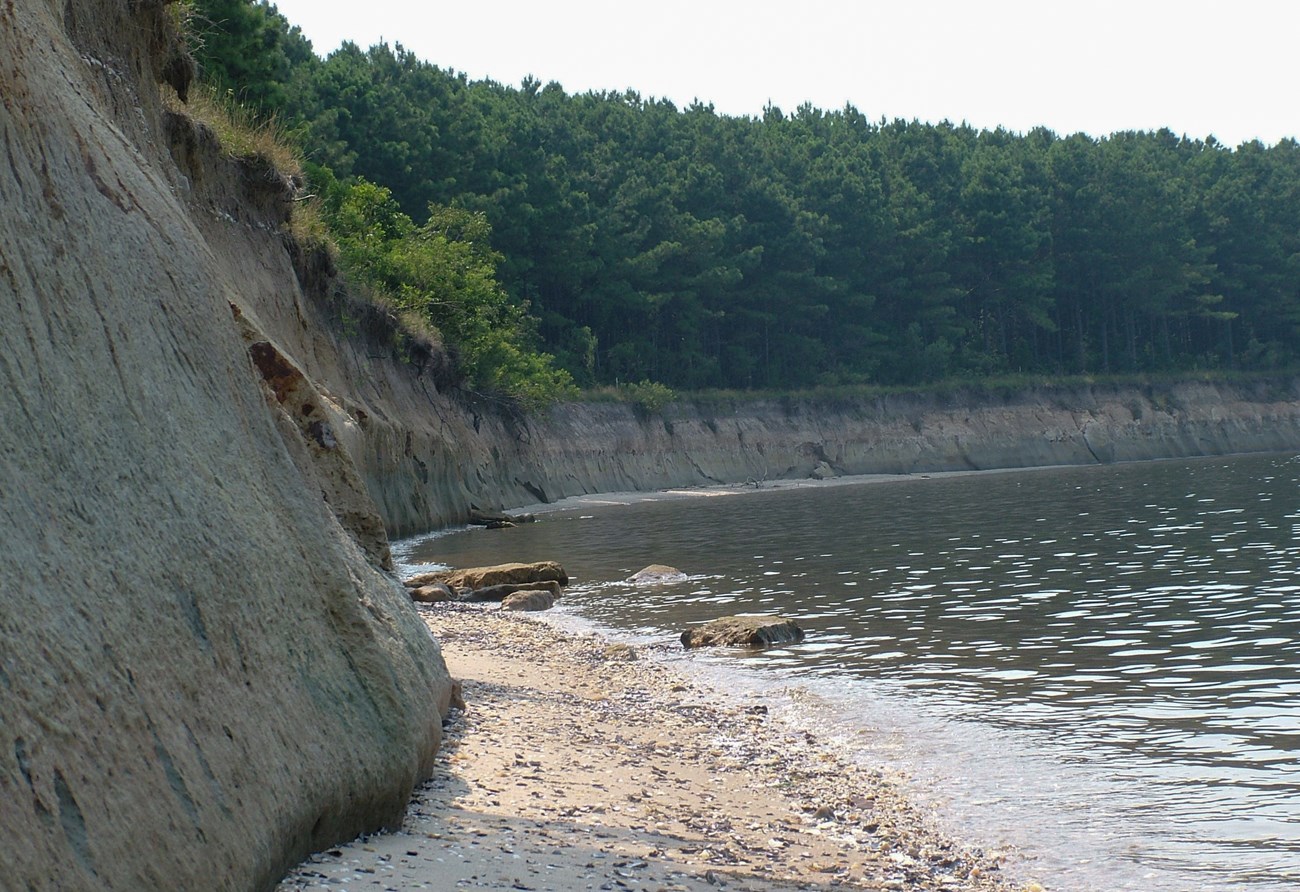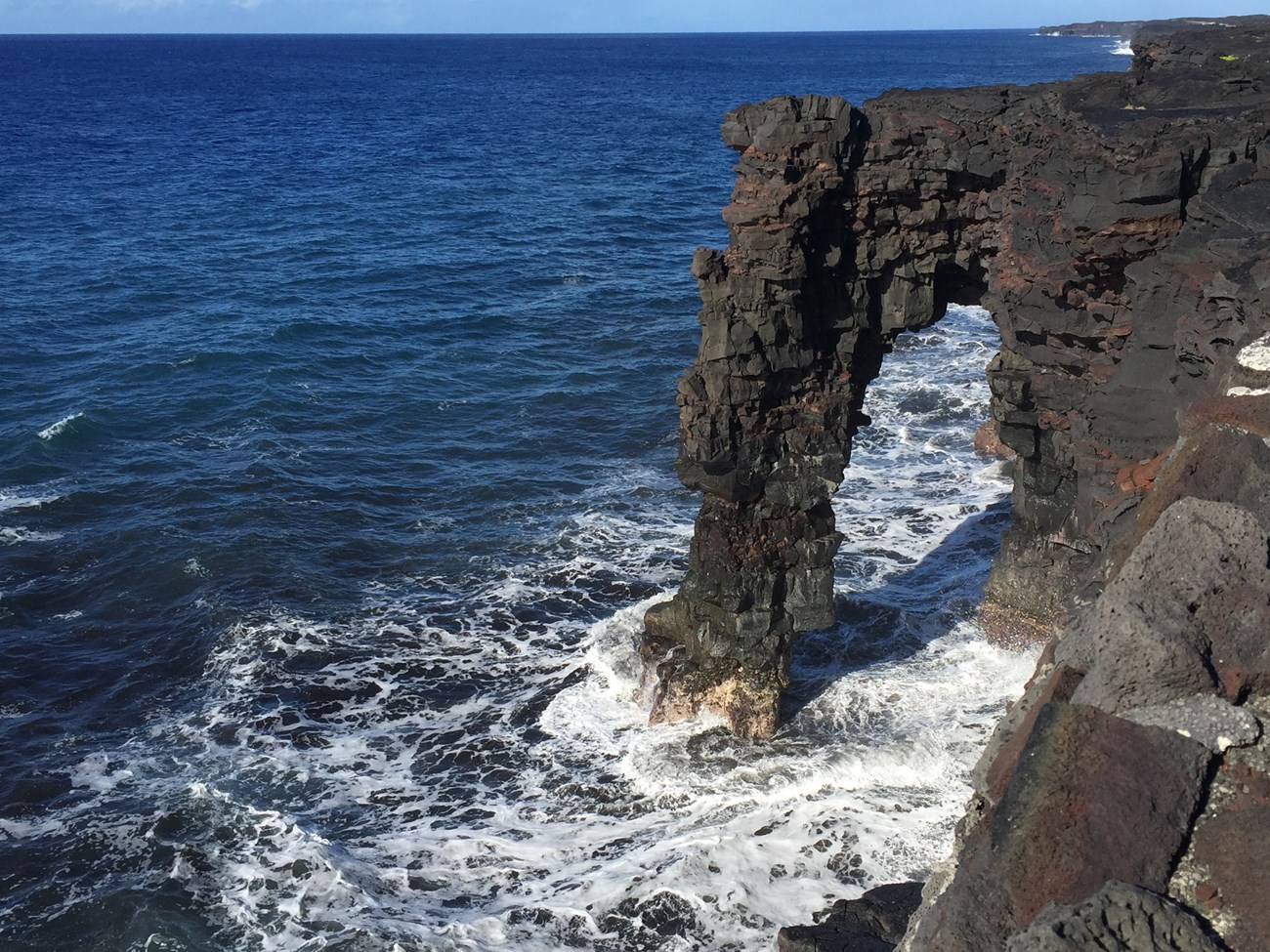Part of a series of articles titled Coastal Processes.
Article
Coastal Processes—Erosion

NPS photo.
Waves are the most important erosive agent along most coasts but their effect varies with wave energy and characteristics, and with the nature of the material exposed to wave attack. Where a coast is formed by steep cliffs that plunge straight into deep water, waves are not forced to break before they impact (surging breakers). As virtually no forward mass displacement of water exists in such waves, they are reflected with little loss of energy and accomplish negligible geomorphic work.

NPS photo.
Much more commonly, coasts are subject to breaking waves. These involve significant mass displacement and a considerable loss of kinetic energy as they break on a shoreline. This energy is not dissipated over a short distance where the shore gradient is steep, but over a greater horizontal distance where it is shallow. Of the main types of breaking waves, plunging breakers produce the highest instantaneous pressure since air can be trapped and compressed between the leading wave front and the shore (Summerfield 1991). A plunging breaker is the sensational, curling type commonly sought after by surfers. Because the energy of the plunging breaker is concentrated in a small or narrow area of the seafloor, it is able to move large amounts of sand.
The combined effect of air compression and impact of a considerable mass of water is capable of dislodging fractured rock and other loose particles, a process known as quarrying. Heavily jointed rocks and unconsolidated or weakly consolidated sediments are particularly susceptible. Breaking waves also may throw particles against the shore, which leads to the abrasion of shoreline materials. The effectiveness of abrasion is highly dependent on wave energy and on the availability of suitable material, such as pebbles, along the shore. Small boulders and pebbles can be moved much more frequently by waves of less energy whereas boulders can be moved only during the most intense storms. During large swell or storm events, the waves bring much higher energy that the beach cannot easily absorb. In response, the energy is used either eroding dunes or cliffs in the rear of the beach or to pass over the dunes as sediment-carrying washover (Pilkey 2011).

NPS photo.
Related Links
- Cape Lookout National Seashore, North Carolina—[Geodiversity Atlas] [Park Home]
- George Washington Birthplace National Monument, Virginia—[Geodiversity Atlas] [Park Home]
- Hawai'i Volcanoes National Park, Hawaii—[Geodiversity Atlas] [Park Home]
Last updated: March 8, 2019
